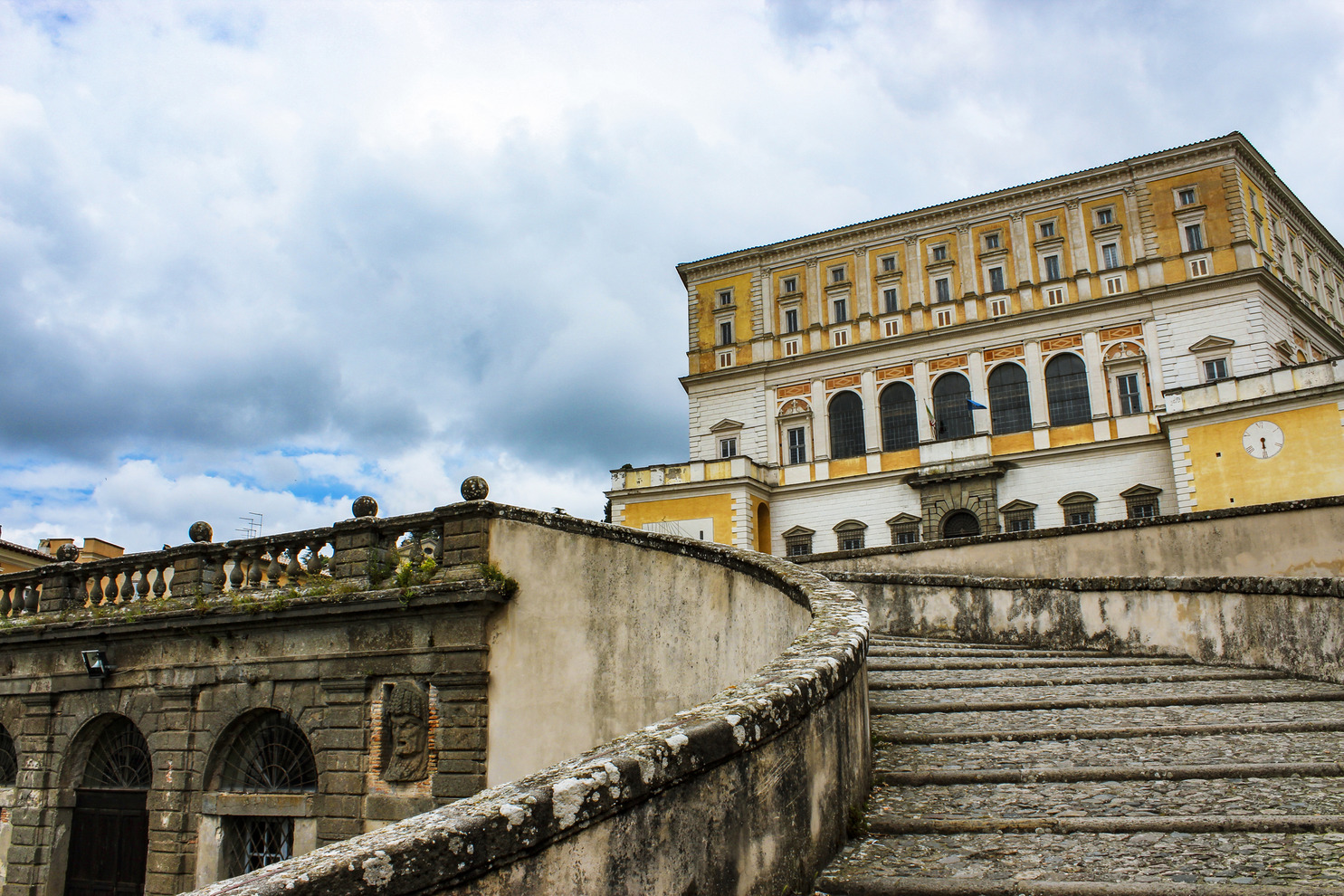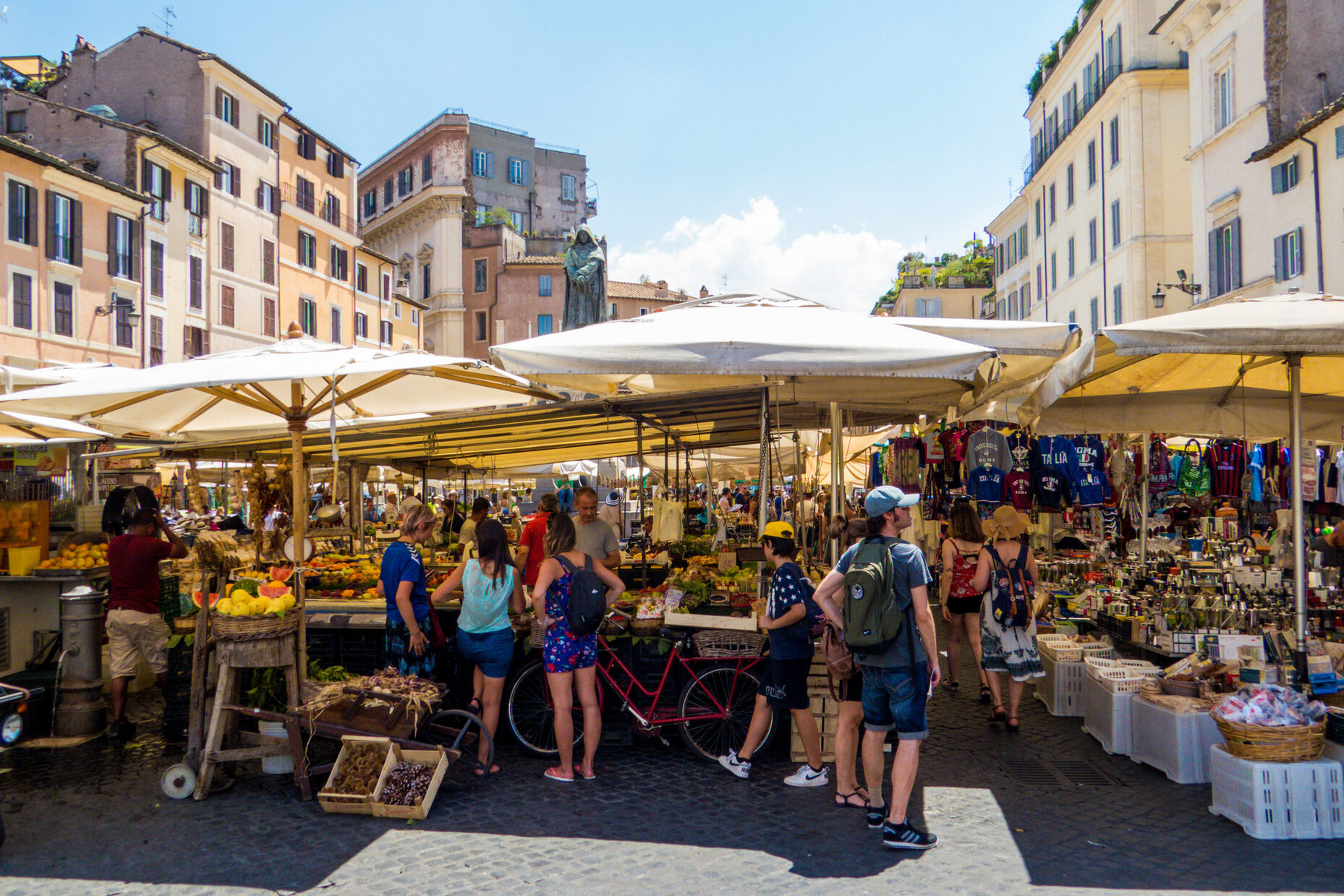Since the advent of travel in the Medieval period, Italy has always been the focus of European voyagers. In the beginning, early travel books were written as guides for the Medieval religious pilgrim seeking Christian sites in Italy. With the growth of an educated upper class in Europe, principally in England, travel began to take on a more secular focus. By the end of the eighteenth century, educated travelers, especially English Protestant travelers, focused on Roman sites. By the beginning of the nineteenth century, this journey became known as the Grand Tour, a voyage that became a necessary component of every upper-class individual’s education, women and men.
Italy became not just the geographical terminus of a traveler’s voyage south, but the very ragion d’essere of the Grand Tour. In England, classical education at Oxford and Cambridge focused on what we term today the classics, Greek and Roman history, literature, and art. Included in their decades’ long immersion in Latin, young men and upper-class women could not consider themselves properly educated if they had not read Gibbon’s The Rise and Fall of the Roman Empire. These early travelers focused, as well, on the works of Italian Renaissance artists, above all Da Vinci, Michelangelo, and Raphael, including the school of painters surrounding them. They thought little of the later Mannerists, whom they felt were merely trying to paint in the “manner” of the great Renaissance painters, but failed. The Baroque, including the great Caravaggio, who received scant attention from these early travelers, was considered a lower order of Italian artistic achievement.
Fortunately, Grand Tour travelers were prolific writers, leaving behind scores of travel books detailing their subjective and culturally-laden impressions of eighteenth, nineteenth, and early twentieth-century Italy. Not surprisingly, their accounts reveal that Italy was located more in their minds than in its geography. They brought with them, especially Protestant travelers, their constructions, both idealized and not so complimentary of Italian Catholic culture. London-based scholar and writer, Chloe Chard has selected a small sample of Grand Tour writing in her Tristes Plaisirs: A Critical Reader of the Romantic Grand Tour. Each chapter contains selections from Grand Tour travel books introduced by insightful introductions. The general theme of her book is the variable and often problematic nature of travelers’ experiences. Accustomed to the comforts of the manor, they found themselves in an alien land where they were forced to endure uncomfortable accommodations and unpalatable food. More interesting, as sophisticated and educated as they were, they peered into an historical past, both pagan Rome and Renaissance, Catholic Italy, including contemporary Italian society, that they found alien and at times offensive to their English social and religious values. Their responses to their travel experiences are represented in the title of Chad’s work, Triste Plaisirs (Sad Pleasures), and her chapter titles: Pleasure, Rising and Sinking in Sublime Places, Dangers and Destabilization, Art, Unease and Life, and finally Gastronomy: Gusto and the Geography of the Haunted.
As Englishwoman Lady Morgan writes, by the time she reached Naples, she was on overload: she was homesick, exhausted both physically and morally, and her curiosity blunted. Travel becomes, in Germaine de Stael’s words, a “triste plaisirs,” (a sad pleasure). The demands that travel makes upon the tourist, especially in Italy, both intellectually and physically, require a careful “management of pleasure.” In Italy, which contains according to UNESCO 85% of the world’s art, the traveler simply cannot see it all, not even in a lifetime. Because of their extensive classical studies, the early travelers on the Grand Tour found themselves caught between the familiar and the foreign. These Protestant travelers delighted in the ancient Roman sites that they had studied, but were not so sure of the idealized representation of Catholic culture in works of art and, above all, Rome’s lavishly ornate baroque Cathedrals. These gilded temples in the midst of Rome’s and Naples’ poor only reinforced their anti-Catholic notions of a corrupt, sacrilegious papacy.
Worse, they were appalled by contemporary Italian Catholic impiety where dogs ran wild in the churches, babies squalled, parishioners talked, and men spat on the floor during Mass. When confronted by either the beauty of a landscape or a work of art, the traveler was both uplifted and disheartened. The great Romantic critic, William Hazlitt expressed it well when he wrote that travelers simultaneously felt themselves “raised in their own thoughts” at the scale of a landscape or object of art but at the same time felt “their personal insignificance by the grandeur” of what they are observing. When entering the Sistine Chapel and looking up, who has not had this experience? That feeling of insignificance is amplified when the traveler is informed that he painted the entire ceiling by himself without the aid of artisans. How he could have painted the ceiling is incomprehensible. When workers took down the scaffolding on the first half of the ceiling and Rafael saw what Michelangelo had accomplished, he returned to his just completed masterpiece in the adjoining room, The School of Athens, took a chisel, and hacked out a corner of the fresco, and in tribute to Michelangelo painted an image of him into the work.
Today, the Grand Tour experience is still much like our own. Also, challenging the Grand Tour traveler’s enjoyment was the constant danger that they faced from brigands, stormy seas, unsafe roads, and debilitating ill-health. Today, we face the destabilizing fear of terrorism, viruses on planes, and the potential theft of our documents. Only recently ISSL has vowed to target Italy. As English woman Maria Graham says in her 1819 travel account, the traveler must beware of the “desultory habits In Art, Unease and Life, Chard recounts the unease even sophisticated, educated travelers felt while standing before nude statuary. It was common in Protestant writers’ journals to record the degree of “undressiness,” as one Protestant traveler wrote, of so many public statues in Italy. In fact, to appease their Protestant visitors, the Apollo Belvedere in the Vatican was fitted with a fig leaf, held in place by a wire. As one traveler wrote, the fig leaf was more offensive than what it intended to hide.
The final chapter on Gastronomy is among the most interesting. Today, Italy is known for its cuisine, but not so for the early traveler. Instead, Italy was renowned for its natural landscape and its cornucopia of fruits and vegetables, including its wild game and fish. Writers often wrote, not of their exquisite dining experiences, but about their outdoor picnics held in Italy’s “luminous” landscape of fruits, vegetables, nuts, and grapes. They described in their writing what had by the beginning of the nineteenth century in Dutch, French, German, and Italian landscape paintings a conventional, idealized the image of Italy as a sun-bathed land that produced an abundance of natural products, including, of course, wine. As the still life paintings (natura morta) of the period demonstrate, they depicted a wide variety of natural products and an equally wide range of wild game and fish. If travelers did have prepared meals, they were composed of roasted local game, again a product closely aligned with the landscape. Stendhal wrote that having the local thrush was “one of the greatest pleasures of Lombardy.”
Prepared dinners were more often served to the traveler in the hostels or boarding houses where they stayed. It is understandable why they might complain about such food, prepared on the cheap by inexperienced hands. Finding palatable wine, especially wine that had not spoiled, was problematic for the traveler. Too often early travel writers, especially from England, complained about the food in Italy and could not wait to return home to have a good meal. They had little contact as foreigners with Italy’s developing culinary tradition. Though there were many published cook books before him, Pellegrino Artusi’s landmark work, Science in the Kitchen and the Art of Eating Well published in 1891, brought together in one work the long-developing culture of Italian cooking that we identify with Italy today. Even if these English travelers were able to sample regional cuisine, the palate being what it is, we can’t be certain that they would have approved of the dishes they were served. Years of taking fast-food consuming American students to Italy has informed me that unfortunately the American palate even today still has trouble with Italian cuisine. Have you ever seen the look of bewilderment on the face of a traveler when served carciofi alla giudia?
As Chard demonstrates in her selection of texts, we can sympathize with our forebears. We share today some of their same travel problems. Italy is among the most problematic of the countries. How to manage our time and not make our travel there more a tribulation than a pleasure? How long is long enough in Rome or Florence? How can the traveler see the beauty of the countryside, north and south, without having to negotiate a foreign highway system? It is never easy. That is why we have had the growth of tour companies in recent decades. They attempt to take out the “tristes” of foreign travel and just leave the “plaisirs.” But that removes so much of the depth and significance of foreign travel. That is, indeed, molto triste.
Ken Scambray is the author of A Varied Harvest: The Life and Works of Henry Blake Fuller, The North American Italian Renaissance: Italian Writing in America and Canada, Surface Roots: Stories, and Queen Calafia’s Paradise: California and the Italian American Novel.





























